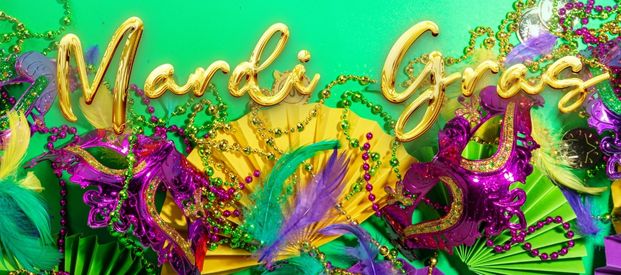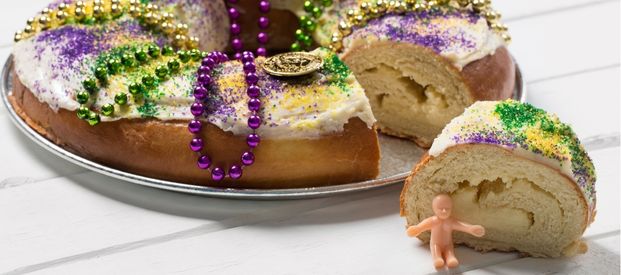The Colourful Festivities & Traditions of Mardi Gras
Mardi Gras is celebrated in different ways around the world, but none are quite so extravagant as the festivities in New Orleans, Louisiana. Parades, floats, costumes and masks are all part of the fun, with many people dressing in the customary colours of purple, green and gold. This year, Mardi Gras takes place on Tuesday 21 February. However, in New Orleans, carnival season always begins on the Feast of Epiphany, 6 January, and culminates in Mardi Gras, which is an official holiday in Louisiana.
The origins of “Fat Tuesday”
The origins of the New Orleans festival date back to the 17th century, but the tradition of Mardi Gras reportedly began in pagan times, deriving from ancient Roman festivals such as Saturnalia. When Christianity was established in Rome, the Mardi Gras celebrations became part of the run-up to Lent, the 40-day period of fasting before Easter Sunday. As Christianity spread throughout Europe, so did the tradition of Mardi Gras. The name itself is French for “Fat Tuesday” and refers to the fact that people would eat up all the rich, fatty foods in their houses before the Lenten fasting period. In the UK it is more commonly referred to as Shrove Tuesday or Pancake Day.
Mardi Gras was first celebrated in America on 3 March 1699 when the French explorer Jean-Baptiste Le Moyne de Bienville landed in Louisiana, not far from modern-day New Orleans. He held a celebration, naming his landing place Point du Mardi Gras. As French colonies settled in the area, the customary Mardi Gras celebrations and traditions began to grow.
Floats and flaming torches
Groups of people, known as “krewes”, organise the parades and balls that take place throughout the carnival season. The term krewe was first used in 1856 when a group calling themselves the Mistick Krewe of Comus organised a torch-lit parade with decorative floats, costumes, marching bands and a masked ball. The flaming torches, known as flambeaux, have become a key fixture in the parades and provide a spectacular display.
Another tradition, which dates back to 1870, is float riders throwing items to the crowd such as cups, doubloons, stuffed animals and, most commonly, strings of beads. Masks are another colourful Mardi Gras custom and have been worn by carnival-goers for centuries. In fact, float riders must wear masks by law!
A carnival of colours
In 1872, a king of carnival, Rex, was established to preside over the first daytime parade. Also that year, the colours of purple, green and gold were introduced as the official colours of Mardi Gras. Purple represents justice, green stands for faith and gold represents power.
Around the same time, the practice of eating “king cakes” was introduced to the proceedings. Inside the cake is hidden a little figurine, which is said to represent the baby Jesus. Whoever finds the figurine in their slice of cake is said to receive good luck and prosperity. The cakes are often decorated in the customary purple, green and gold.
This February, over 320 years after Bienville’s first Mardi Gras celebration, 1 million visitors are expected to flock to Louisiana to enjoy the colourful festivities. As they say in New Orleans: “Laissez les bons temps rouler” or “Let the good times roll!”











